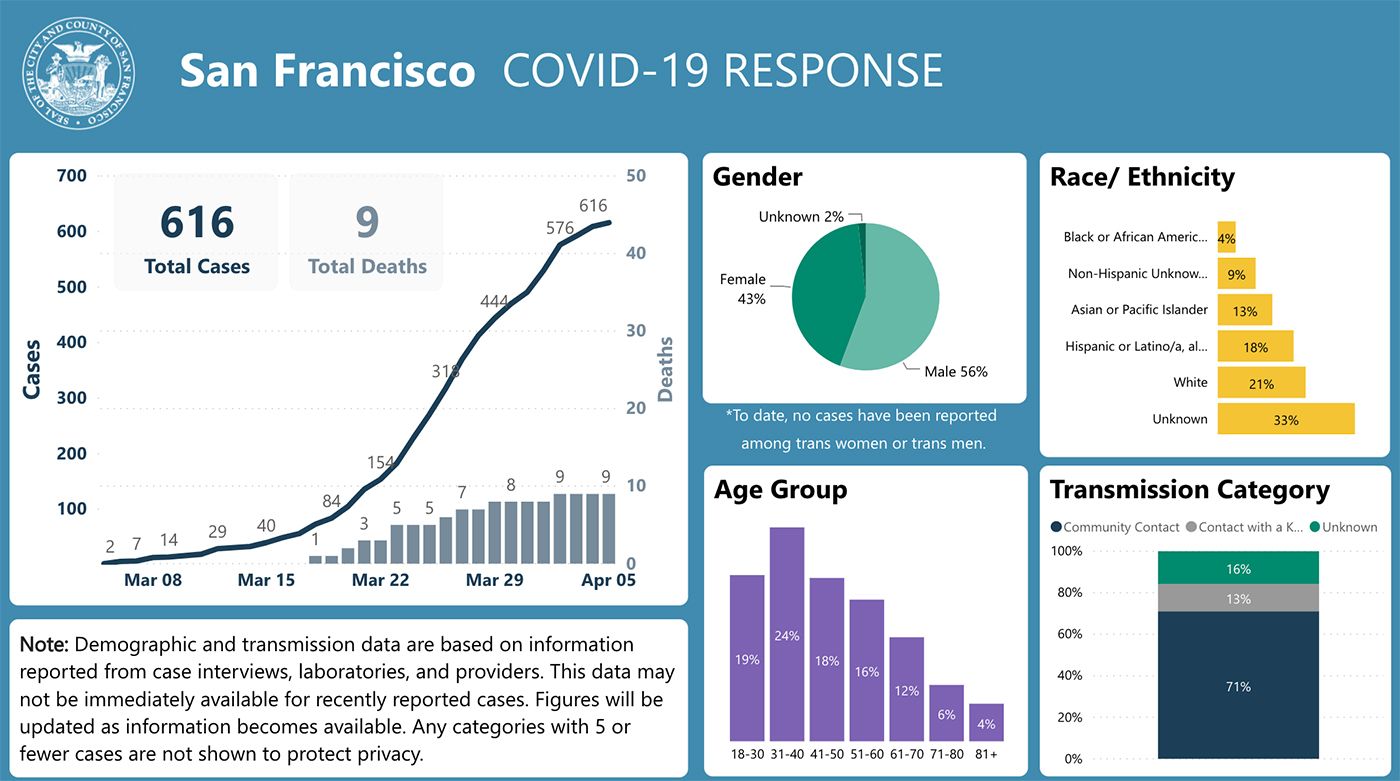For the first time since the coronavirus outbreak began in the Bay Area, San Francisco's Department of Public Health has released some demographic information about the 622 cases in the city to date.
As of Tuesday, we now have this COVID-19 data tracker to go with the daily case counter and death toll, and it has a bunch of newly publicized details about who in San Francisco has contracted the virus and been tested. (True numbers are not possible to know because of the likely number of asymptomatic and mild cases that individuals had or currently have without knowing it.)
During a Monday press conference, SF public health director Dr. Grant Colfax said that this tracker was in the works, and he stressed that the local response to the pandemic "is grounded, and will continue to be grounded, in data, science, and facts."
To date, 5,645 San Franciscans have been tested for the virus, and with 622 confirmed cases of April 7, that means 11 percent have turned up positive — and 89 percent either had symptoms of something else or had known contact with a positive case and did not catch it. (The city cites a figure of 13 percent testing positive.)
56 percent of the positive cases are male, and 43 percent are female, with just under 2 percent unknown or unreported. The city says that no trans men or women have so far been reported as a positive case.
71 percent of cases are considered "community transmission," in which the source of the infection was not known and the person had no known contact with a positive case.
The most interesting data, which is perhaps reflective of the demographics of the city as a whole, has to do with age. While we have known in other countries that severe and fatal cases have tended to be more among the elderly — and we don't have a breakdown of severity by age in this data — the overall case count reflects infections in younger people in San Francisco. Almost one in five cases in the city were people aged 18 to 30. Nearly one in four (24 percent) confirmed cases were people aged 31 to 40. And 18 percent of cases were people aged 41 to 50. This means that 61 percent of San Francisco's confirmed cases are/were in people aged 18 to 50.
Only four percent of local infections have occurred in people over the age of 81.

In terms of racial demographics, one third of SF cases have no reported race or ethnicity. 21 percent of cases are white patients; 18 percent are Latinx; 13 percent are Asian or Pacific Islander; and 4 percent are African American.
San Francisco has not seen an escalation in deaths, though the fatality toll may spike in the next week or two according to health officials. For several days the city has claimed just 9 total deaths with no new deaths, and there has yet to be a day in which there have been more than two new deaths reported. That may change.
In terms of the severity of cases, San Francisco had only 26 COVID-19 patients in need of hospital care as of March 23, but that number has risen to 83 as of Monday. 37 of those are in intensive care units in the city, while 46 are in so-called "acute" care and therefore likely not in need of a ventilator.

See all the latest county-level data and the Bay Area case-count chart here.

